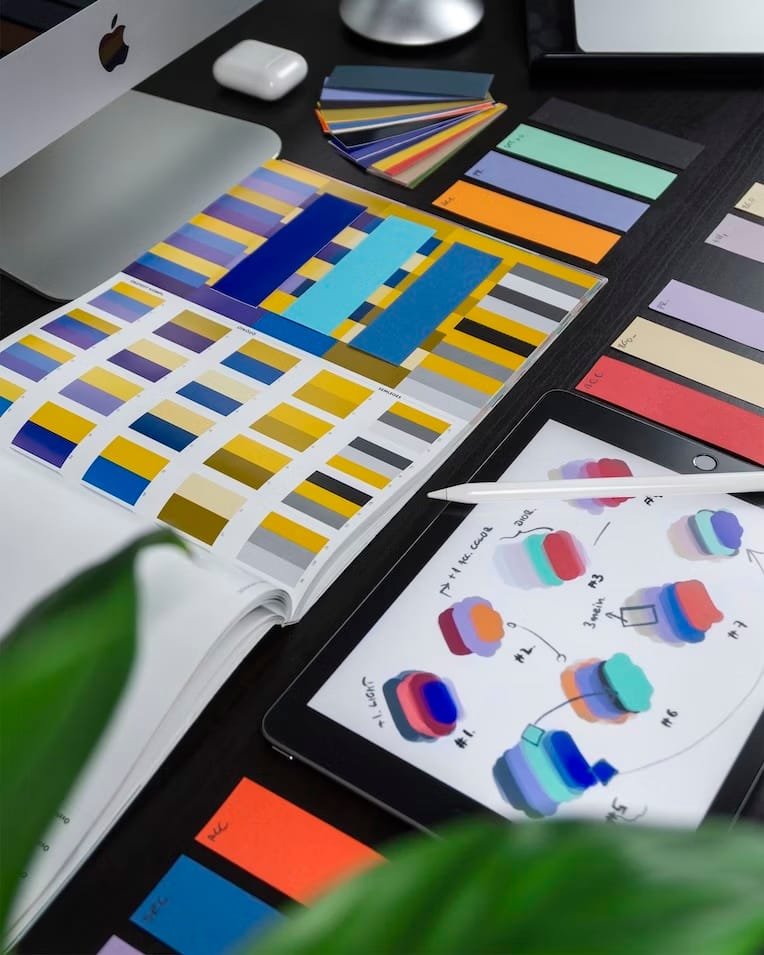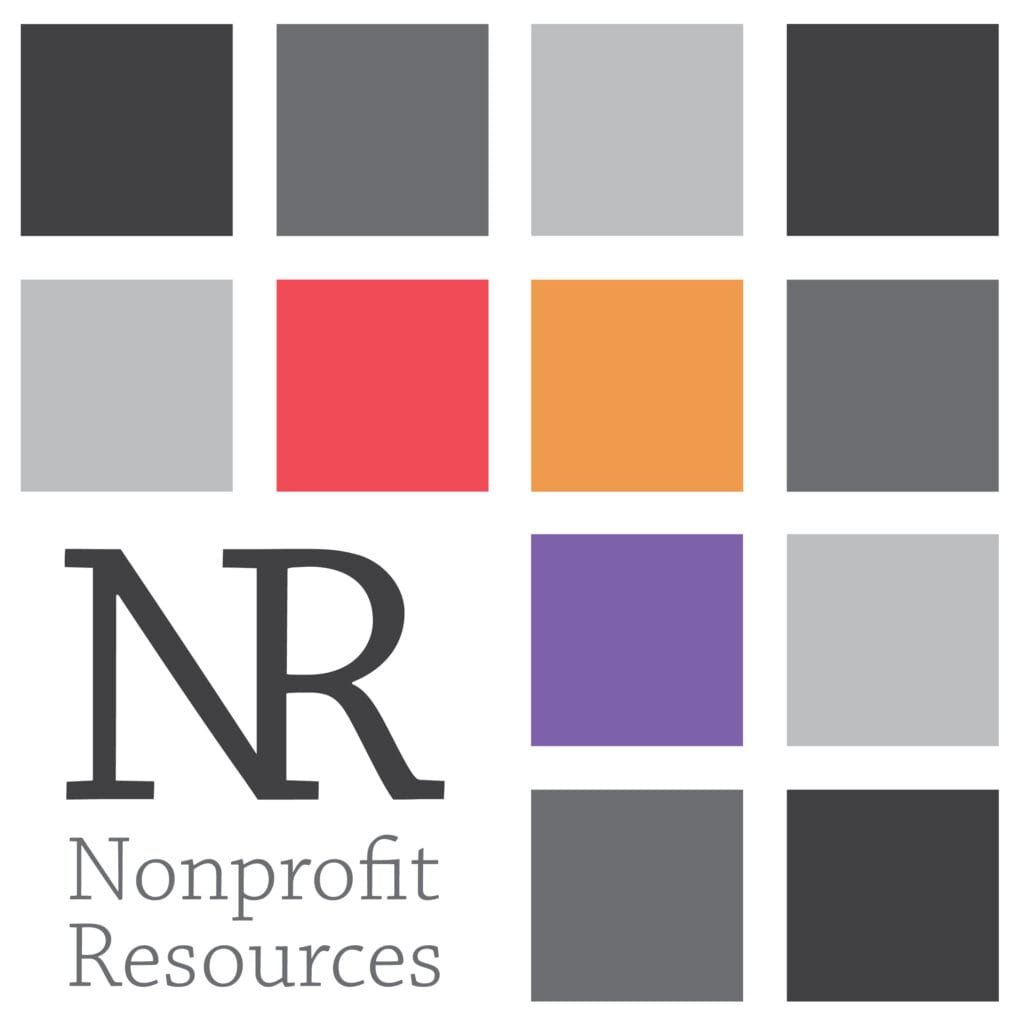In the world of marketing, capturing consumers’ attention and creating a memorable brand is essential for success. There are many moving parts that contribute to effective marketing, but one that often gets overlooked is the strategic use of color. Color theory offers valuable insights into how we can use certain hues to evoke emotions and shape the viewer’s perceptions. In this blog post, we will explore the relationship between color theory and marketing and how we use that knowledge to create impactful branding and successful marketing campaigns.
The Psychology of Color
 Color has the remarkable ability to trigger emotional responses and impact the human subconscious. Understanding the psychology behind colors is key for our Graphic Design and Marketing department, as it helps us connect with the intended target audience on a deeper level. Let’s dive into a few prominent colors widely used in branding:
Color has the remarkable ability to trigger emotional responses and impact the human subconscious. Understanding the psychology behind colors is key for our Graphic Design and Marketing department, as it helps us connect with the intended target audience on a deeper level. Let’s dive into a few prominent colors widely used in branding:
Red: This vibrant hue symbolizes passion, energy, and urgency. It can create a sense of excitement and encourage impulsive buying decisions, making it ideal for clearance sales or limited-time offers.
Blue: Often associated with trust, reliability, and serenity, blue is a popular choice for technology and financial companies. It promotes a sense of security and competence, instilling confidence in consumers.
Yellow: Evoking feelings of warmth, happiness, and optimism, yellow is attention-grabbing and encourages feelings of positivity. It is commonly used to promote children’s products or evoke a sense of joy.
Green: Symbolizing nature, growth, and harmony, green appeals to environmentally conscious consumers. It is also associated with wealth and prosperity, making it suitable for financial and organic products.
Purple: Back when dyes were handmade, purple was hard to make and therefore wildly expensive. That is why it is commonly associated with royalty, luxury, and wealth. It also communicates creativity and wisdom. Purple is often used to target sophisticated or artistic audiences. It can add a touch of elegance and exclusivity to a brand.
Orange: Vibrant and energetic, orange is often used to create a sense of enthusiasm and adventure. It can stimulate impulse purchases and appeals to young and adventurous consumers.
Shades VS. Tints
Taking it a step further, there are hundreds of shades and tints of any given color. A tint is a hue of a color with white mixed in and a shade is with black mixed in. For example, pink is a tint of red. It is obvious that pink and red have very different symbolisms. Why is that?
Tints of a color tend to give off feelings of softness, purity, and tranquility. They can create a sense of calmness and openness and make a design delicate and airy. For example, light blues often represent serenity and peacefulness, while light pinks can convey gentleness and femininity.
Shades of a color bring about a different set of emotions and associations. They are often linked to power, elegance, and formality. Dark blues, for instance, can symbolize authority and professionalism, while dark reds can evoke a sense of passion and intensity. Darker shades generally create a more sophisticated and luxurious atmosphere and are often employed in upscale branding and designs.
Bright and vibrant shades of a color are known for their eye-catching and energetic qualities. They are attention-grabbing, dynamic, and often associated with excitement and enthusiasm. These shades can inject energy into a design or marketing campaign. Think of bold reds, lively yellows, or vibrant oranges that demand immediate attention.
Pastel shades are soft, muted versions of colors and can evoke a gentle and soothing ambiance. They are often used to create a sense of nostalgia, romance, or sweetness. Pastel pinks, greens, and blues are commonly seen in branding or designs targeting a youthful or feminine audience. These shades offer a more subtle and delicate approach compared to their brighter or bolder counterparts.
Neutral shades play a significant role in color theory and are some of my personal favorites to add to a design. What can I say, I’m an achromatic addict. Whites, grays, and blacks are often considered neutral colors and are frequently used to create balance, contrast, or a sense of sophistication. Neutral shades are versatile and can be paired with a variety of colors, making them essential in achieving a harmonious color palette.
Now that we know a little bit about a lot of colors, how do we use them in marketing and design?
Branding and Color:
 Selecting the right colors for your brand is crucial; think of it as your association’s personality and how it will be perceived. Once you have your perfect palette, consistency in their usage across all brand elements is essential to create a recognizable and cohesive identity. Here are some examples of where you will solidify your image with branding:
Selecting the right colors for your brand is crucial; think of it as your association’s personality and how it will be perceived. Once you have your perfect palette, consistency in their usage across all brand elements is essential to create a recognizable and cohesive identity. Here are some examples of where you will solidify your image with branding:
Logo: A well-designed logo communicates a brand’s essence at a glance. Colors play a major role in logo design, as they evoke certain emotions and help differentiate a brand from its competitors. Consider McDonald’s iconic golden arches, which utilize the attention-grabbing power of red and yellow. You can quite literally recognize them from a mile away.
Website and Packaging: The color scheme used on a company’s website and product packaging greatly impact an audience’s first impression. For example, a minimalist website with a clean white background can convey a sense of simplicity and sophistication, while a vibrant and playful color palette can create a fun and youthful experience.
Advertising and Marketing Collateral: When creating marketing materials such as brochures, banners, or social media posts, understanding the target audience and the desired emotional response is key. Using colors that align with the brand’s identity and elicit the intended emotions will strengthen the message and increase engagement.
Nonprofit Resources is here to help you implement all of these insights with an expansive range of graphics and marketing services. Whether it is a carefully curated logo design or a stellar marketing plan, we will be able to further advance the image of your nonprofit organization and make your competitors green with envy.
NINETY-FOUR percent of people believe that their first impression of a company is design related. We can help you raise funds, build your membership base, bolster your mailing list, create awareness, inform key stakeholders, and encourage partners and volunteers – we want to take your foundation to the next level. Are you in?



0 Comments